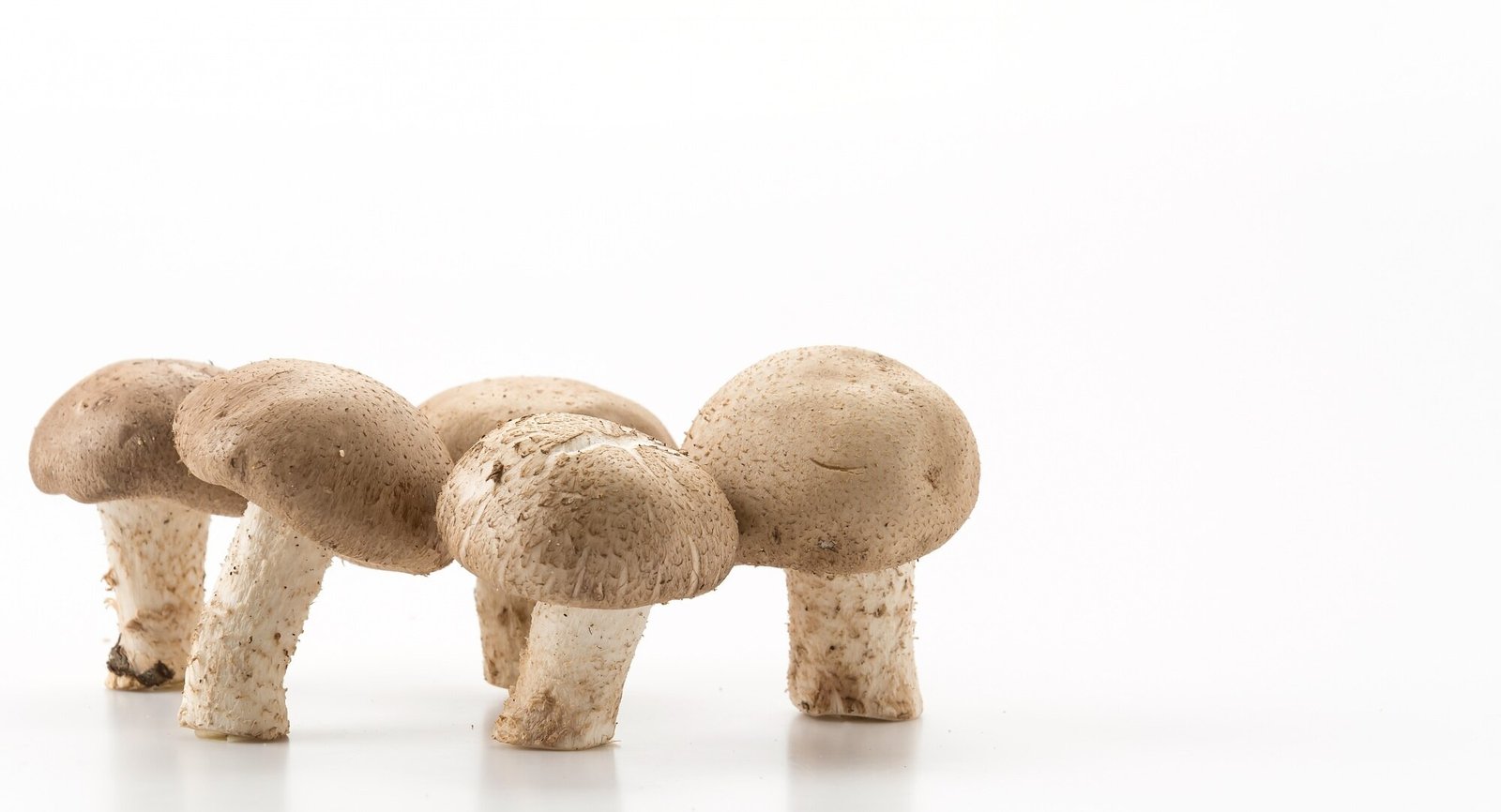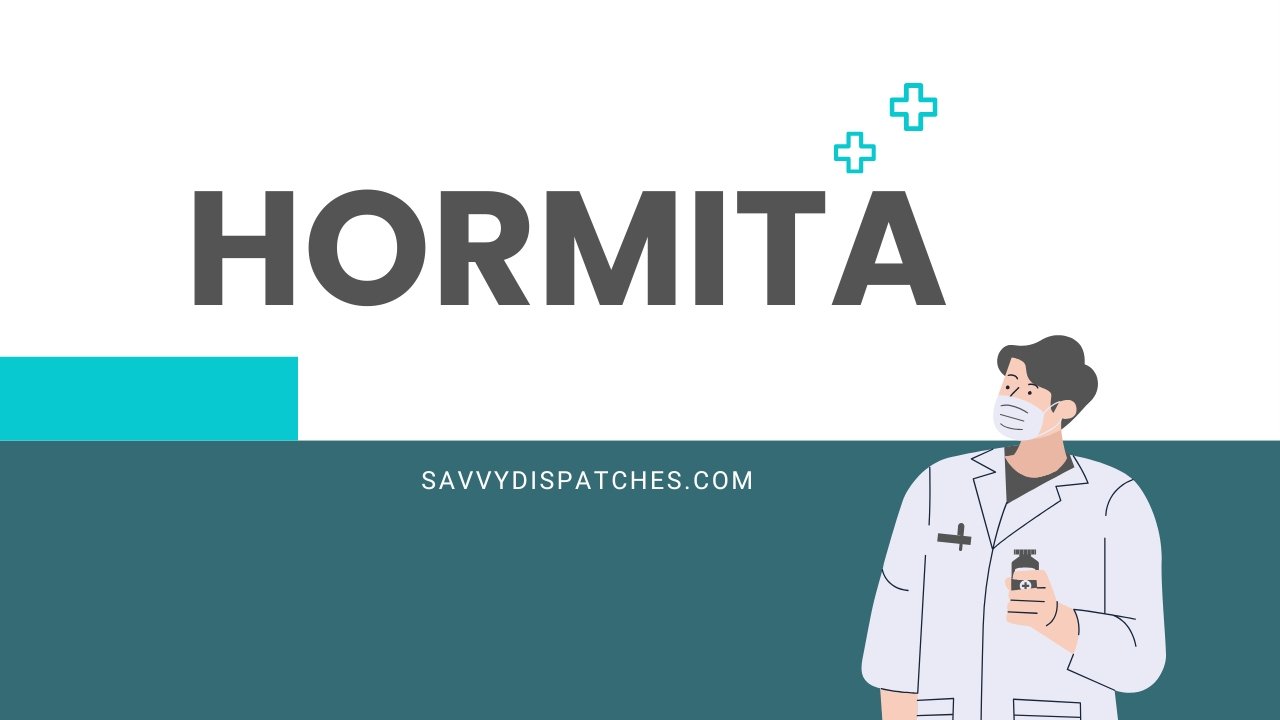Health & Fitness
How Long Do Shrooms Last? Must-Know Facts!

The length of the effects of shrooms, or magic mushrooms is 4 to 6 hours depending on factors like dosage, personal metabolism and whether or not they are taken on an empty stomach.
The peak of the trip usually reaches 2 to 3 hours after ingestion with intense visual and sensory alteration. While the main effects are dissipated in a few hours, some will experience residual aftereffects like mild euphoria or drowsiness, for 24 hours.
Psilocybin is metabolized in the body relatively quickly, but residues linger in the body for several days. Familiarity with these time frames is required for safe and responsible use.
What are shrooms? How do they Work?
The word for Magic Mushrooms as slang is shrooms. Magic mushrooms are mushrooms containing the psychoactive compounds psilocybin and psilocin. These compounds are responsible for the hallucinogenic effects in the mushrooms. Psilocybe cubensis, Psilocybe semilanceata, and other members of the genus Psilocybe are the most common magic mushrooms.
How Do Shrooms Work?
Magic mushrooms operate primarily through their active compounds, psilocybin, and psilocin, which interact with the brain’s serotonin system. Here’s how they work:
Psilocybin Conversion:
When ingested, psilocybin is metabolized in the body into psilocin, the compound responsible for the psychedelic effects.
Serotonin Receptor Activation:
Psilocin has the same chemical makeup as the neurotransmitter serotonin and affects mood, perception, and cognition. Psilocin’s action is mainly on serotonin 5-HT2A receptors in the brain, especially in brain regions responsible for mood, sensory perception, and cognition.
Altered Brain Activity:
Activation of the 5-HT2A receptors leads to changes in brain connectivity and communication. This results in:
Altered perception: Visual and auditory hallucinations, synesthesia (e.g., “seeing” sounds or “hearing” colors).
Emotional shifts: Intense emotions, euphoria, or introspection.
Ego dissolution: A sense of losing the self or merging with the environment.
Time distortion: A feeling that time is slowing down or speeding up.
Default Mode Network (DMN) Modulation:
Psilocin reduces activity in the default mode network (DMN), the brain network involved in ego, self-referential processing, and habitual thinking. This reduction is thought to be the source of the vivid feelings of unity, creativity, and spirituality reported by the users.
Effects and Duration of Shrooms

Source – FreePik
Effects and duration of magic mushroom use vary with factors like dosage, personal metabolic rate, type of mushroom used, and mindset and surroundings of the individual consuming them. Below is the detailed breakdown:
Effects of Shrooms
Magic mushrooms have the psychoactive compounds psilocybin and psilocin, both of which are psychedelic due to their action on serotonin receptors within the brain. The effects are said to be profound and life-changing but greatly dependent on the user and context.
Positive Effects:
Sensory Alterations:
- Enhanced colors, patterns, and visual hallucinations.
- Synesthesia (e.g., “seeing” sounds or “hearing” colors).
- Distorted sense of time and space.
Emotional Shifts:
- Euphoria and feelings of joy.
- Increased empathy and connection to others.
- Spiritual or mystical experiences.
Cognitive Changes:
- Enhanced creativity and problem-solving.
- Deep introspection and self-reflection.
- Ego dissolution (a sense of losing the self or merging with the universe).
Therapeutic Potential:
- Reduced symptoms of depression, anxiety, and PTSD (in clinical or therapeutic settings).
- Increased openness and emotional resilience.
Negative Effects:
Psychological Distress:
- Anxiety, paranoia, or panic.
- Confusion or disorientation.
- “Bad trips” (intense, frightening experiences).
Physical Discomfort:
- Nausea or vomiting (common due to the chitin in mushrooms).
- Dizziness or headaches.
- Increased heart rate or blood pressure.
Long-Term Risks:
- Exacerbation of underlying mental health conditions (e.g., schizophrenia, bipolar disorder).
- Hallucinogen Persisting Perception Disorder (HPPD), is a rare condition involving flashbacks or persistent visual disturbances.
Duration of Effects
The timeline of a shroom trip can vary, but here’s a general outline:
Onset (20-60 minutes):
Effects typically begin within 20-60 minutes after ingestion, depending on factors like metabolism, stomach contents, and the form of consumption (e.g., raw mushrooms, tea, or capsules).
Peak (2-3 hours):
The most intense effects occur during this period, lasting 2-3 hours. Users often experience strong hallucinations, emotional shifts, and altered thinking.
Come-Down (1-2 hours):
The intensity gradually decreases, but users may still feel lingering effects, such as mild visuals, emotional sensitivity, or introspection.
Afterglow (4-6 hours post-peak):
After the main effects wear off, many users report an afterglow period characterized by feelings of peace, clarity, and emotional openness. This can last several hours.
Total Duration
Typical Trip: 4-6 hours (from onset to the end of noticeable effects).
Afterglow: Up to 12-24 hours (mild emotional and cognitive effects may persist).
For how long can a drug test find shrooms?

Source – FreePik
Psilocybin detection in a drug test is influenced by the type of drug test, the quantity one consumes, frequency of consumption, as well as individual factors like metabolism. A general list is presented below:
Urine Test:
Psilocybin and its metabolite, psilocin, are typically detectable in urine for 1-3 days after use. In rare cases, it may be detectable for up to a week in heavy or chronic users.
Blood Test:
Psilocybin and psilocin are usually detectable in blood for 6-12 hours after ingestion, though this window can vary depending on the dose and individual metabolism.
Saliva Test:
Psilocybin is rarely tested for in saliva, but if it is, it would likely only be detectable for 1-24 hours after use.
Hair Test:
Psilocybin is not commonly included in routine hair drug testing. Hair testing of psilocybin is infrequent but can detect recent drug use for as much as 90 days if conducted.
When the shrooms have worn off
After the most intense effects of the magic mushrooms (shrooms) have dissipated, most users enter the afterglow stage, which can last for anywhere from hours to days. There are still residual effects on emotions the mind and in some instances the body.
Health & Fitness
Elevating Hormone Wellness in Pennsylvania: A Positive Review of Bioidentical Hormone Replacement Therapy

When seeking hormone balance and vitality in Pennsylvania, it’s vital to find a clinic that understands your needs, uses safe and modern techniques, and places your health first. That’s why many people turn to Sanctuary Wellness Institute, because of Why We Only Use Bioidentical hormone therapies and their patient-centric philosophy. In this article, we’ll explore how their approach works, why their focus on Why We Only Use Bioidentical hormones matters, and why this institute stands out in the field of hormone replacement therapy (HRT).
Understanding Bioidentical Hormone Replacement Therapy (BHRT)
Bioidentical hormone replacement therapy (BHRT) refers to treatments that use hormones whose chemical structure is identical to those naturally produced by the human body. For many people in Pennsylvania, dealing with hormonal shifts due to aging, menopause, andropause, or other health changes, BHRT offers an attractive option. It’s precisely because the molecules match the body’s own hormones that Why We Only Use Bioidentical becomes the core of Sanctuary Wellness Institute’s messaging.
The appeal is clear: these hormones are designed to integrate seamlessly into the body’s signaling systems, reducing the risk of “foreign” compounds, and aligning with the concept of restoring natural balance. While conventional HRT uses synthetic or non-identical hormones, BHRT aims for a more “natural” feel. The team at Sanctuary Wellness Institute emphasizes this point in every consultation: we are restoring your hormone balance, not introducing something entirely artificial.
Beyond the structural similarity, they tailor doses, delivery methods, and monitoring protocols so that hormone levels reflect your unique physiology. This active, individualized approach makes BHRT — and specifically their version of BHRT — stand out from one-size-fits-all treatments.
Why We Only Use Bioidentical: The Guiding Principle at Sanctuary Wellness Institute
At the heart of the Sanctuary Wellness Institute’s philosophy lies the phrase Why We Only Use Bioidentical. Let’s unpack what that means and why it matters in real life.
First, the decision to use only bioidentical hormones reflects a commitment to compatibility and precision. Because these hormones mirror what your body already produces, the hope is fewer unwanted reactions and better outcomes. Sanctuary Wellness Institute stresses that this is not just marketing — it’s a clinical decision based on how the body responds.
Second, the phrase underscores their dedication to clarity and education. Patients aren’t left wondering, “Why this hormone? Why that dose?” Instead, the team explains: “Because you are receiving bioidentical hormones, we have optimized your dose to reflect your lab work, symptoms, and goals.” By repeating Why We Only Use Bioidentical, they remind patients of the uniqueness of their care and the importance of selecting the right hormone type.
Third, the institute ties this decision to overall wellness rather than merely symptom control. At Sanctuary Wellness Institute, the idea is that hormone balance influences energy, mood, cognitive clarity, body composition, and overall vitality. When patients ask, “Why choose bioidentical?,” the answer given is straightforward: we want to help you feel like yourself again — naturally, gradually, and with fewer side-effects.
What the Treatment Process Looks Like
When you choose Sanctuary Wellness Institute, you embark on a thorough, personalized journey. It typically begins with a detailed consultation: medical history, symptom review, prior hormone use, lifestyle and nutrition. Because they adhere to Why We Only Use Bioidentical, the evaluation is more in depth — not just “Are your hormone levels low?” but “How do they compare to benchmarks for your age and wellness goals?”
Next comes targeted lab work. Many clinics rely on generic panels, but this institute takes the extra step to measure a broad range of hormones and metabolic indicators, ensuring the approach is tailored. Then the team designs a hormone plan that uses bioidentical formulas — delivered via the route that fits you best (e.g., capsules, patches, creams, or pellet therapy) — always aligned with Why We Only Use Bioidentical principles.
Once the program starts, they monitor your response carefully — symptoms, lab results, side-effects, and overall health. The team communicates with you, adjusts doses as needed, and integrates lifestyle support (nutrition, sleep, stress management). Because the foundation is bioidentical hormones, the adjustments feel more “fine-tuning” than major overhauls. Over time, many patients report better energy, improved mood, clearer cognition, improved body composition, and renewed sense of well-being.
The Benefits You Can Expect (and Why They Matter)
When your body’s hormone systems are out of balance, the effects can ripple across every major system — heart health, bone health, mood regulation, sleep, metabolism, and more. At Sanctuary Wellness Institute, where Why We Only Use Bioidentical is emphasized, patients often report one or more of the following benefits:
- Increased energy and reduced fatigue, suggesting improved adrenal or thyroid-hormone support alongside the primary BHRT program.
- Improved mood and mental clarity — less “brain fog,” fewer mood swings, and better stress resilience.
- More stable sleep patterns and fewer night sweats or hot flashes (especially for women in perimenopause or menopause).
- Improved sexual drive, performance, and satisfaction — for both men and women, when testosterone, estrogen, or progesterone balance is restored.
- Enhanced body composition: more lean muscle, less fat accumulation, better metabolic efficiency (though lifestyle still matters).
- Bone and cardiovascular support: While BHRT isn’t a silver bullet, restoring hormone balance can contribute positively to bone density and cardiovascular markers — part of the broad wellness mission at Sanctuary Wellness Institute.
These benefits reflect the institute’s holistic vision: hormone therapy isn’t just about alleviating symptoms, but about optimizing your system so you can live with vitality, not just survive. The emphasis on Why We Only Use Bioidentical reinforces that objective.
Addressing Safety and Common Concerns
It’s natural to ask: is BHRT safe? What’s the catch? Sanctuary Wellness Institute acknowledges these questions openly. Because they are committed to Why We Only Use Bioidentical, they pair the hormone treatment with rigorous monitoring and transparency.
They explain that even though bioidentical hormones are structurally identical to human hormones, they still must be used carefully. Regular lab work, follow-ups, and lifestyle supports are essential. Patients with certain conditions (for example, active breast cancer, uncontrolled clotting disorders) may be directed to other therapies. The institute ensures you are informed and empowered about risks, benefits, and alternatives.
They also emphasize that hormone therapy is not an isolated fix — it works best when combined with good nutrition, movement, stress management, and appropriate sleep. This integrated message sets them apart: they don’t say “inject a hormone and you’re done”; they say “let’s restore your hormone health as part of your whole-body wellness.” Because they focus on Why We Only Use Bioidentical, they avoid generic dosing and instead use a custom plan tailored to your unique biology.
Why Choose Sanctuary Wellness Institute in Pennsylvania?
When there are multiple hormone therapy options in Pennsylvania, why pick Sanctuary Wellness Institute? Here are the aspects that make them a strong choice:
- A clear philosophy: They articulate Why We Only Use Bioidentical, and they back it up with personalized plans rather than cookie-cutter treatments.
- Personalized evaluation: From initial assessment to lab work to delivery method, every step is customized to you.
- Continuous support: Monitoring, feedback, dose-adjustments, lifestyle coaching — so you are not left alone after the first visit.
- A wellness-first mindset: They view hormone balance as part of total health and vitality, not just symptom suppression.
- Transparent communication: You get clear answers about why bioidentical hormones, what to expect, how long it may take, and how it integrates with your life.
Together, these factors reflect their bias (in a positive way) toward giving you the best possible outcome — a bias grounded in their belief in bioidentical hormones and individualized care. So if you’re considering hormone therapy in Pennsylvania and are comparing providers, Sanctuary Wellness Institute stands out as a committed, patient-focused choice where Why We Only Use Bioidentical isn’t just a slogan but the foundation of care.
A Few Practical Tips Before You Begin
- Schedule a full consultation— Make sure your provider is willing to spend time reviewing your complete medical history, symptoms, goals, and labs.
- Ask about delivery methods— Different people respond differently to patches, creams, injections, or pellets. At Sanctuary Wellness Institute, you’ll evaluate the best fit for your lifestyle and biology.
- Lifestyle integration matters— Hormone therapy is more effective when paired with good sleep, a balanced diet, regular movement, stress management, and avoidance of toxins.
- Set realistic timelines— While some patients notice improvement within weeks, optimization may take several months of tuning, monitoring, and lifestyle support.
- Stay informed— Ask why bioidentical hormones for you. Ask about monitoring, possible side-effects, when adjustments might be needed. Remember the statement: Why We Only Use Bioidentical — your provider should articulate that clearly.
- Budget and insurance— While some bioidentical products may be covered, others may not. Ensure you understand costs, refunds, and follow-up policies.
This kind of attention to detail, customization, and the clear philosophical stance of Why We Only Use Bioidentical makes the experience at Sanctuary Wellness Institute more than a routine clinic—it’s a wellness partnership.
In the fast-moving world of hormone science and wellness, it’s reassuring to find an institute that grounds itself in clarity, patient-focus, and modern hormone science. If you’re in Pennsylvania and looking to take control of your hormonal health, energy, and vitality, the path offered by Sanctuary Wellness Institute—with its commitment to personalized bioidentical hormone treatment—offers a thoughtful, highly-positive option. The difference lies in the phrase “Why We Only Use Bioidentical” and the real-life care you receive along with it.
Frequently Asked Questions
Q: What exactly are bioidentical hormones?
A: Bioidentical hormones are chemically identical to the hormones naturally produced by your body. Because of this molecular match, the philosophy behind their use is that your body may handle them more naturally, which is central to why Sanctuary Wellness Institute says Why We Only Use Bioidentical.
Q: How long does it take before I notice improvements after starting BHRT?
A: Many patients begin noticing improvements in a few weeks in terms of sleep quality, mood, or energy. Full optimization—when you feel consistently better—may take a few months of monitoring and adjustments. At Sanctuary Wellness Institute, the focus on Why We Only Use Bioidentical means they aim for the most natural timeline rather than rushing the process.
Q: Are there risks associated with bioidentical hormone therapy?
A: Yes. Although bioidentical hormones are structurally identical, hormone therapy still carries risks: changes in clotting, breast health, cardiovascular health, and others depending on your personal background. That’s why the monitoring and individualized care at Sanctuary Wellness Institute are important.
Q: Will insurance cover my treatment at Sanctuary Wellness Institute?
A: Coverage depends on the insurance plan, the specific hormone formulations used, and how the treatment is coded and documented. The team at Sanctuary Wellness Institute is experienced at working with patients on this and will help you understand costs and coverage in alignment with the “Why We Only Use Bioidentical” approach.
Q: What happens if I change my mind or my health changes and I need to stop therapy?
A: The system at Sanctuary Wellness Institute is designed to adapt — doses can be adjusted, delivery methods changed, or therapy tapered off if needed. Because they adhere strictly to the guiding principle of Why We Only Use Bioidentical, the emphasis is on your ongoing wellness, not making you locked into a one-size program.
Health & Fitness
The Essential Guide to Choosing the Best Adult Nappies for Comfort and Care

Choosing the right Adult Nappies is crucial for ensuring comfort, dignity, and effective care for individuals dealing with incontinence or other medical conditions. With various options available in the market, making an informed choice can significantly impact the user’s quality of life.
Incontinence is a condition that can affect individuals of all ages, but it is more prevalent among the elderly. Finding the right adult nappy involves considering numerous factors such as absorbency, fit, material, and cost. This guide will assist you in understanding these facets to make an informed purchasing decision.
Understanding the Types of Adult Nappies
Adult nappies come in different types, each designed to cater to specific needs and preferences. The most common types include disposable nappies, reusable cloth nappies, and all-in-one nappies. Disposable nappies are popular for their convenience, while reusable cloth nappies appeal to those looking for an eco-friendly solution.
All-in-one nappies typically combine the benefits of both disposable and reusable types, offering flexibility and cost-effectiveness. Knowing the differences between these types is essential for choosing the one that best meets the user’s lifestyle and comfort requirements.
Importance of Absorbency Level
Absorbency is a critical factor to consider when selecting adult nappies. The level of absorbency needed can vary greatly depending on the severity and frequency of incontinence episodes. High-absorbency nappies are suitable for overnight use or for those with significant bladder issues, while lighter absorptive options may suffice for daytime use or light incontinence.
Understanding the absorbency level ensures that the user remains dry and comfortable throughout their daily activities, reducing the risk of skin irritation and infections.
Finding the Perfect Fit
The fit of an adult nappy can greatly affect both comfort and functionality. A well-fitted nappy will prevent leaks and provide necessary security for the user, whereas a poorly fitted one can cause discomfort and possible embarrassment due to leakage.
Manufacturers offer a range of sizes and shapes to fit different body types and sizes. Consulting size guides and, if possible, trying a sample before purchasing in bulk can help find the ideal fit. Elasticated waistbands and adjustable tabs can also offer a more personalised and secure fit.
Material Considerations
The material of adult nappies impacts both comfort and skin health. Breathable materials help to maintain airflow, reducing the risk of skin rashes and discomfort. Nappies made of hypoallergenic materials are suitable for individuals with sensitive skin or allergies.
Additionally, considering nappies that incorporate odour control features can enhance discretion and confidence for users.
Balancing Cost and Quality
While cost is an important consideration for many, it should not be the only factor guiding your choice. High-quality adult nappies can significantly improve the user’s quality of life, and investing in them is often justified by the comfort and security they provide.
Bulk buying can help mitigate costs, as many suppliers offer discounts for larger purchases. However, it is advisable to ensure the product suits the user’s needs before committing to large quantities.
Environmental Impact of Adult Nappies
Environmental concerns are increasingly influencing purchasing decisions. For consumers mindful of their carbon footprint, reusable cloth nappies present a sustainable alternative to conventional disposable options. Additionally, some companies offer biodegradable disposable nappies that reduce environmental impact.
Balancing personal needs with ecological responsibility is important for environmentally conscious consumers.
Tailoring Choices to Individual Needs
Every individual is unique, and their requirement for adult nappies will vary. It is crucial to consider personal medical conditions, lifestyle, and personal preferences when selecting a product. Consulting with healthcare professionals can provide additional guidance tailored to individual needs.
Understanding these factors allows for a more bespoke approach, ensuring that the chosen product delivers optimal comfort and functionality.
Consulting Healthcare Professionals
Healthcare professionals, such as doctors or incontinence specialists, can provide valuable insights into the best products for specific conditions. They can help assess the severity of incontinence and recommend products that best suit the user’s needs, ensuring a greater level of comfort and effectiveness.
Relying on expert advice can prevent complications and improve the user’s experience with adult nappies.
Conclusion
Choosing the right adult nappy is a significant decision that affects comfort, dignity, and overall well-being. By understanding the various types, absorbency levels, fit, materials, and cost considerations, individuals and caregivers can make informed choices that enhance quality of life. Adult Nappies are more than just a necessity; they are a key component in providing personalised and effective incontinence management.
Health & Fitness
Hormita: The Key to Unlocking Your Health Potential

Are you feeling sluggish, moody, or simply out of sync with your body? If so, you’re not alone. Many people experience fluctuations in their energy levels and emotions that can be traced back to hormonal imbalances. Enter Hormita—a revolutionary approach designed to help you reclaim your health by addressing the intricate relationship between hormones and overall wellness. Imagine unlocking a healthier version of yourself through simple lifestyle changes and tailored strategies. Get ready to explore how Hormita can illuminate the path to optimal living!
What is Hormita?
Hormita is more than just a buzzword; it’s a holistic approach to health that centers on hormonal balance. This concept recognizes that hormones play a crucial role in regulating numerous bodily functions, from metabolism and mood to sleep patterns and reproductive health.
At its core, Hormita combines nutrition, lifestyle adjustments, and mindfulness techniques tailored to individual needs. It encourages individuals to understand their unique hormonal profiles and how they impact daily life.
The goal of Hormita is simple yet profound: empower you with knowledge and tools for achieving optimal well-being. By focusing on this vital aspect of health, many find themselves experiencing improved energy levels, enhanced mood stability, and better overall physical conditions.
Whether you’re grappling with specific issues or simply seeking greater vitality, exploring the realm of Hormita can open exciting doors toward personal transformation.
The Link Between Hormones and Health
Hormones play a pivotal role in maintaining our overall health. These chemical messengers influence nearly every bodily function, from metabolism to mood regulation. When hormones are balanced, life feels effortless and vibrant.
However, even minor fluctuations can lead to significant disruptions. Stress, diet changes, or lack of sleep can throw hormone levels off balance. This imbalance is often linked to issues like fatigue, weight gain, or anxiety.
Understanding this connection is crucial for anyone looking to enhance their well-being. Hormonal health affects everything—from energy levels to skin appearance and reproductive functions.
Recognizing the signs of hormonal imbalance enables proactive steps toward restoration. It’s not just about feeling good; it’s about thriving in everyday life with optimal hormone function ensuring you feel your absolute best each day.
Common Hormonal Imbalances and Their Effects
Hormonal imbalances can disrupt your everyday life. They often lead to a range of uncomfortable symptoms.
For instance, low estrogen levels can cause mood swings and fatigue. This imbalance frequently affects women during menopause but can occur in younger individuals as well.
On the other hand, high cortisol levels, often linked to stress, may result in sleep disturbances and weight gain. Chronic stress takes a significant toll on overall health.
Thyroid hormone irregularities are another common issue. An underactive thyroid might leave you feeling sluggish and gaining weight unexpectedly.
Men may experience testosterone fluctuations too. Low testosterone can lead to reduced energy levels and decreased muscle mass.
Understanding these imbalances is crucial for addressing them effectively. Identifying symptoms early on opens doors for better management strategies tailored to individual needs.
How Hormita Can Help Balance Your Hormones
Hormita offers a holistic approach to hormone balance, focusing on natural methods that empower your body. By integrating dietary changes, mindfulness practices, and physical activity into daily life, Hormita encourages a healthier hormonal environment.
Through personalized nutrition plans rich in essential vitamins and minerals, it supports the body’s endocrine system. Foods like leafy greens and healthy fats can play a crucial role in regulating hormones effectively.
Mindfulness techniques such as meditation or yoga help reduce stress levels. Lowered stress translates directly to better hormone regulation and overall well-being.
Physical activity is another cornerstone of the Hormita lifestyle. Regular exercise not only boosts mood but also optimizes hormone production.
By embracing Hormita principles, individuals can take proactive steps toward achieving hormonal harmony while enhancing vitality throughout their lives.
Benefits of Balanced Hormones
Balanced hormones play a crucial role in our overall well-being. They influence mood, energy levels, and even metabolism. When hormones are in harmony, life feels more vibrant.
One significant benefit is improved mental clarity. Balanced hormones can enhance cognitive function, making it easier to focus and think clearly throughout the day.
Physical health also sees remarkable improvements. A harmonious hormonal balance aids weight management, promoting a healthier body composition without excessive dieting or intense workouts.
Moreover, balanced hormones contribute to emotional stability. Many individuals experience reduced anxiety and better stress management when their hormone levels are optimal.
Sleep quality often improves as well. Regulated hormones help establish healthy sleep patterns, leading to deeper rest and rejuvenation each night.
Each of these benefits reinforces the importance of maintaining hormonal balance for both physical and mental health enhancement.
Implementing a Hormita Lifestyle
Adopting a Hormita lifestyle starts with awareness. Begin by tracking your daily habits and how they impact your mood, energy levels, and overall well-being. Journaling can be an effective tool for this.
Next, focus on nutrition. Integrate whole foods into your meals while reducing processed items. Think colorful fruits and vegetables that nourish your body at the cellular level.
Physical activity is equally important. Aim for a mix of strength training, cardio, and mindfulness practices like yoga or meditation to balance both body and mind.
Sleep hygiene plays a crucial role too. Ensure you maintain a consistent sleep schedule to foster hormone production during those vital nighttime hours.
Connect with supportive communities or professionals who understand the Hormita approach. Sharing experiences can empower you on this journey toward hormonal harmony.
Conclusion
Hormita represents a transformative approach to understanding and managing your health through hormonal balance. By recognizing the intricate link between hormones and overall well-being, you can make informed decisions about your lifestyle. Hormonal imbalances can lead to various health issues, but with the guidance of Hormita principles, these challenges can be addressed effectively.
Adopting a Hormita lifestyle brings numerous benefits that extend beyond mere physical health. From improved mood and energy levels to better sleep quality and enhanced cognitive function, balanced hormones pave the way for a more vibrant life. The journey towards achieving this balance might require some adjustments in daily habits, but the results are worth it.
Embracing Hormita gives you powerful tools to unlock your full potential. It’s not just about feeling good; it’s about thriving in every aspect of life. Engage with this holistic approach and experience how balancing your hormones can redefine what wellness means for you.

 Blog10 months ago
Blog10 months agoHow to Deal with Scabies While Traveling

 Travel10 months ago
Travel10 months agoRichmond, Virginia Street Art Guide

 Travel9 months ago
Travel9 months agoPerhentian Islands: How to Get There, What to Expect, & More

 Travel9 months ago
Travel9 months agoHow to Live in Your Car in New Zealand

 Travel9 months ago
Travel9 months agoSouvenir in Nepal: A Guide to Unique Handicrafts and Cultural Treasures

 Travel9 months ago
Travel9 months agoVegan Guide to Dining Out in Richmond, Virginia

 Food9 months ago
Food9 months agoVegetarian Food Nepal: A Journey into Flavorful Plant-Based Cuisine

 Travel6 months ago
Travel6 months agoA Local’s Guide to Sanibel Island, Florida















